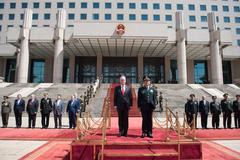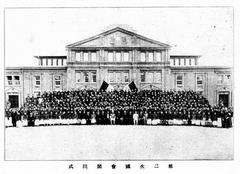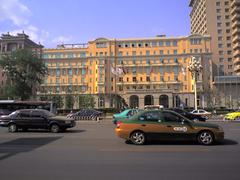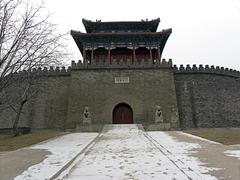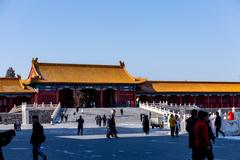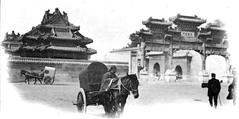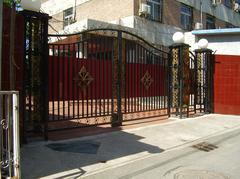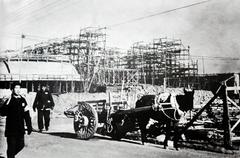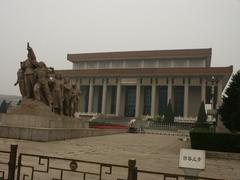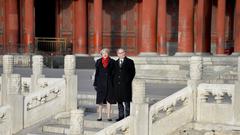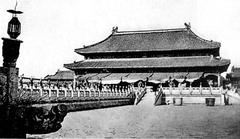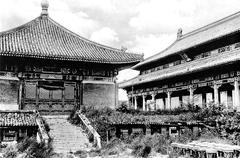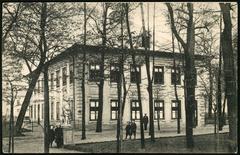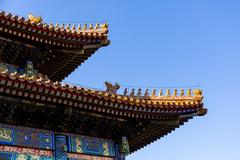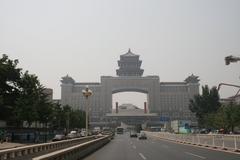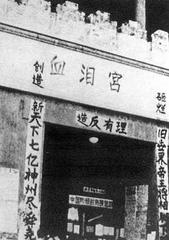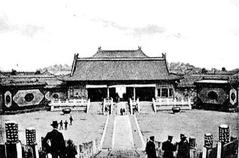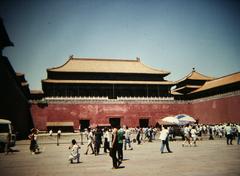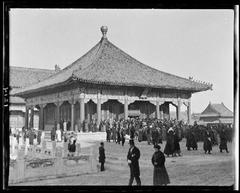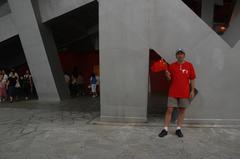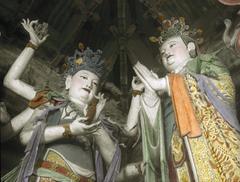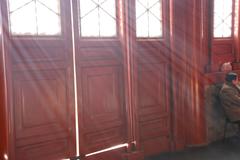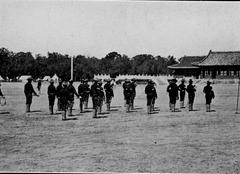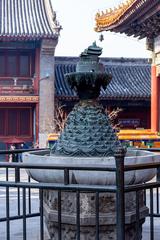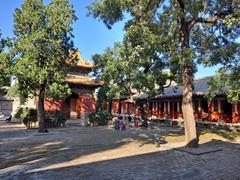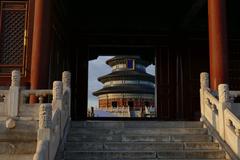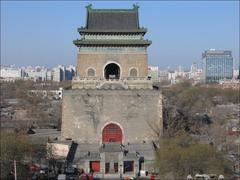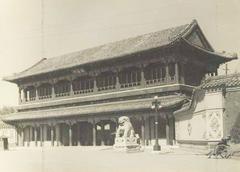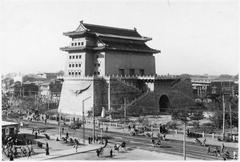Théâtre D'Opéra De Pékin De Zheng Yici
Zhejiang Cihui Temple : Guide to Visits, History, and Cultural Significance in China
Introduction
The Cihui Temple in Zhejiang Province (浙江慈慧寺) is a beacon of Buddhist architecture and spiritual practice, representing a crucial element of China’s rich religious heritage. This detailed guide aims to provide visitors with comprehensive information on its history, architectural splendor, cultural importance, and practical visiting tips. Whether you are a devout Buddhist, a history enthusiast, or a curious traveler, understanding the Cihui Temple is key to appreciating the depth of spiritual and artistic traditions in China.
For the most up-to-date details, authoritative historical context, and information on visiting schedules, please consult official resources such as local Zhejiang tourism boards, Buddhist association websites, and reputable historical archives.
Table of Contents
- Historical Origins and Significance
- Architectural Features and Artistic Masterpieces
- Role in Buddhist Culture and Local Life
- Modern Day Preservation and Visitor Experience
- Visiting Information
- Visitor Etiquette and Best Practices
- Nearby Attractions
- Frequently Asked Questions (FAQ)
- References and Further Reading
Historical Origins and Significance
The Cihui Temple boasts a long and storied history, deeply intertwined with the development of Buddhism in Zhejiang. While precise founding dates can vary across historical records, temples of this nature often trace their lineage back to ancient dynasties, possibly the Tang or Song periods, where Buddhism flourished and became a significant force in Chinese society. The temple’s name, “Cihui” (慈慧), which translates to “compassionate wisdom,” reflects core Buddhist tenets and suggests a history dedicated to spiritual enlightenment and altruistic practice.
Over the centuries, Cihui Temple has served as a vital center for religious activities, a sanctuary for monks and nuns, and a place of pilgrimage for lay Buddhists from Zhejiang and surrounding provinces. Its historical significance lies not only in its longevity but also in its role in preserving and propagating Buddhist scriptures, rituals, and art forms. Many temples of Cihui’s stature have weathered dynastic changes, periods of conflict, and social upheavals, emerging as enduring symbols of faith and cultural resilience.
Architectural Features and Artistic Masterpieces
The architectural style of Cihui Temple is likely representative of traditional Chinese temple construction, characterized by a harmonious blend of structural integrity and aesthetic beauty. Typically, such temples are laid out in a central axis, with various halls and structures like the Mountain Gate (Shanmen), Heavenly King Hall (Tianwangdian), Main Hall (Daxiongbaodian), Sutra Depository (Cangjinglou), and monk’s quarters (Sengfang).
Key architectural elements include:
- Wooden Structures: Traditional wooden beams, pillars, and roofing tiles, often intricately carved and painted with symbolic motifs.
- Courtyard Layout: A series of courtyards that create a sense of progression and tranquility.
- Roof Design: Eaved roofs with decorative finials, often featuring representations of mythical beasts or Buddhist symbols.
- Statuary and Iconography: Magnificent statues of Buddha, bodhisattvas, arhats, and guardian deities, crafted from materials like bronze, wood, or ceramic, adorned with vibrant colors and gold leaf.
- Murals and Reliefs: Walls adorned with intricate murals depicting Buddhist narratives, celestial beings, and geometric patterns.
The temple may also house precious Buddhist artifacts, scriptures, and calligraphy, serving as repositories of religious and artistic heritage.
Role in Buddhist Culture and Local Life
Cihui Temple has historically played a central role in the spiritual and cultural life of the Zhejiang region. As a functioning monastery, it provides a space for monks to practice their vows, study Buddhist teachings, and conduct daily rituals. For the local populace and wider community of believers, the temple serves as a place of worship, a center for Buddhist festivals, and a source of spiritual guidance and comfort.
- Religious Observances: The temple hosts regular chanting sessions, meditation retreats, and ceremonies marking important Buddhist festivals such as Vesak (Buddha’s Birthday), Kathina (robes offering ceremony), and Lunar New Year.
- Community Hub: Beyond religious functions, temples often serve as gathering places for local communities, offering educational programs, charitable activities, and cultural events.
- Preservation of Traditions: Cihui Temple acts as a custodian of Buddhist traditions, preserving ancient rituals, monastic rules, and artistic practices passed down through generations.
Modern Day Preservation and Visitor Experience
In contemporary China, there is a growing appreciation for cultural heritage, leading to efforts to preserve historic temples like Cihui. Restoration projects are often undertaken to maintain the structural integrity of ancient buildings, protect valuable artworks, and ensure the temple can continue to serve its spiritual and cultural functions.
Visitors to Cihui Temple can expect an atmosphere of peace and solemnity, inviting contemplation and respect. The experience is enriched by the opportunity to:
- Admire Architecture: Appreciate the grandeur and detail of traditional Chinese temple design.
- Engage with Art: Observe the skillful craftsmanship of Buddhist statuary, murals, and calligraphy.
- Experience Serenity: Find a moment of quiet reflection amidst the temple’s tranquil environment.
- Learn about Buddhism: Gain insights into Buddhist philosophy, history, and practices through observation and, if available, guided explanations.
Visiting Information
Location and Access
The Cihui Temple is situated in Zhejiang Province, a region celebrated for its cultural heritage and natural beauty. Depending on the specific location within Zhejiang (e.g., near a major city like Hangzhou or in a more rural setting), access might involve various modes of transport.
- Proximity to Cities: If located near a major urban center, public transport such as buses or high-speed trains connecting to that city would be advisable.
- Rural Locations: For temples in more remote areas, local buses, taxis, or private car hire might be necessary.
- Navigation: Using GPS or local maps is recommended for precise directions.
Visiting Hours
Temple visiting hours are typically aligned with daylight, allowing visitors to appreciate the architecture and atmosphere. Standard hours often range from early morning (e.g., 8:00 AM) to late afternoon or early evening (e.g., 5:00 PM or 6:00 PM). However, for functioning monasteries, monks’ prayer times may impose restrictions on access to certain areas. It is always best to verify the specific opening hours from official sources before planning your visit.
Entrance Fees and Donations
Many temples in China operate on a donation basis, or they may charge a modest entrance fee to support their upkeep and conservation efforts. Visitors are often encouraged to make voluntary donations to support the temple’s charitable activities and maintenance of its historical structures and treasures.
Guided Tours and Cultural Activities
Some larger or more prominent temples may offer guided tours, often led by knowledgeable volunteers or monastic members, providing in-depth information about the temple’s history, architecture, and Buddhist significance. Check if such services are available at Cihui Temple. Additionally, the temple might host special cultural events or workshops, offering a richer visitor experience.
Visitor Etiquette and Best Practices
To ensure a respectful and harmonious visit, adhere to the following etiquette:
- Modest Dress: Wear conservative clothing that covers shoulders and knees. Avoid revealing or overly casual attire.
- Silence and Reverence: Maintain a quiet demeanor within the temple grounds, especially in prayer halls. Avoid loud conversations or disruptive behavior.
- Photography: Be mindful of photography restrictions. Generally, avoid taking photos of monks in prayer or during religious ceremonies, and refrain from using flash photography inside halls containing religious artifacts.
- Respect for Symbols: Do not touch or sit on Buddha statues, altars, or religious artifacts unless explicitly permitted.
- Removing Shoes: You may be required to remove your shoes before entering certain temple buildings.
- Offerings: If you wish to make an offering at the temple, follow the customary practices or seek guidance from temple staff.
Nearby Attractions
Depending on the Cihui Temple’s specific location within Zhejiang, there may be numerous other points of interest, such as:
- Other Temples and Monasteries: Zhejiang is rich in Buddhist sites, and visiting other temples in the vicinity can offer a broader perspective on the region’s religious landscape.
- Natural Scenery: Many temples are nestled amidst beautiful natural settings like mountains, rivers, or lakes, offering opportunities for scenic walks or exploration.
- Cultural Villages and Historic Towns: Explore traditional villages or historic towns that offer insights into local customs, crafts, and lifestyle.
- Museums and Art Galleries: Discover local history, art, and cultural exhibitions in nearby cities.
Frequently Asked Questions (FAQ)
Q: What are the typical visiting hours for Cihui Temple? A: Most temples are open from morning (around 8:00 AM) to late afternoon (around 5:00 PM or 6:00 PM). It’s advisable to check specific hours beforehand.
Q: Is there an entrance fee for Cihui Temple? A: Many temples charge a small entrance fee or rely on voluntary donations to support their operations and preservation.
Q: Can I take photos inside the temple? A: Photography policies vary. It’s best to avoid flash photography in prayer halls and refrain from photographing religious ceremonies or statues without permission.
Q: What is the appropriate dress code for visiting a temple? A: Dress modestly, covering shoulders and knees, to show respect.
Q: Are English-speaking guides available? A: Availability varies. For more prominent temples, guides might be accessible, but it is not guaranteed for all.
References and Further Reading
- [Official Zhejiang Tourism Website](https://english. Zhejiangtour.com) (Example – actual URL may vary)
- Buddhist Association of Zhejiang Province (Example – actual URL may vary)
- Academic papers or books on Buddhism in China and Zhejiang Province.
- Reputable travel blogs and historical sites discussing Zhejiang’s cultural heritage.
Conclusion
A visit to the Cihui Temple in Zhejiang offers a profound journey into the heart of Chinese Buddhist culture. Its historical depth, architectural beauty, and spiritual significance make it a compelling destination for those seeking to connect with China’s enduring traditions. By respecting temple etiquette and planning your visit thoughtfully, you can fully appreciate the serene atmosphere and rich heritage that Cihui Temple embodies.
Call to Action
To discover more cultural and historical sites in Zhejiang, explore our other guides on traditional villages and ancient towns. For updates on Buddhist festivals and recommendations for spiritual journeys in China, download the Audiala app and follow our social media channels.


